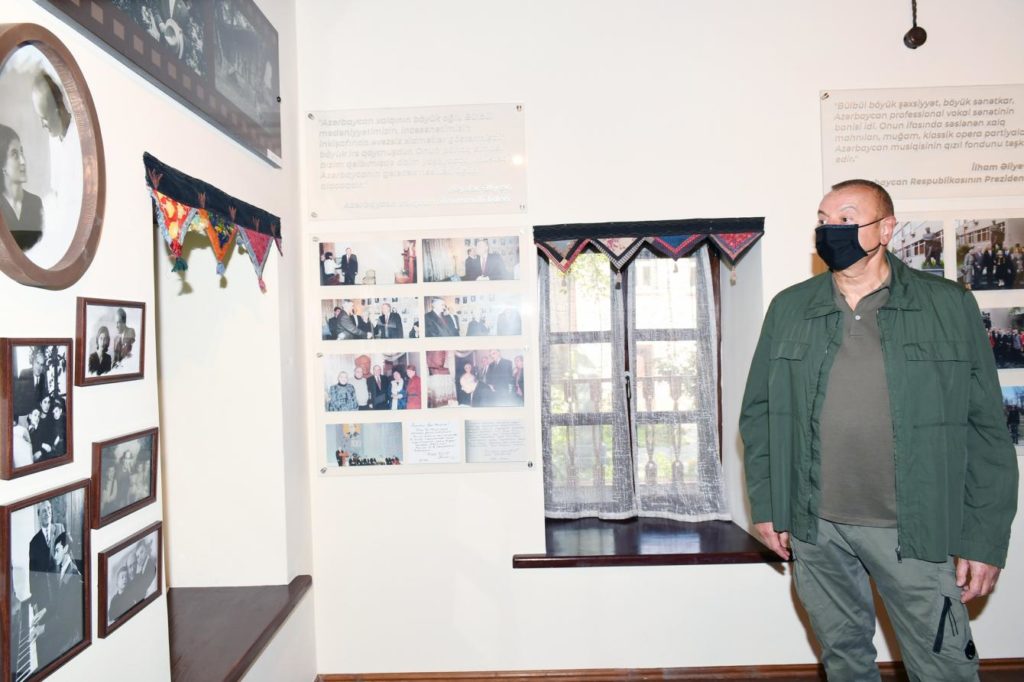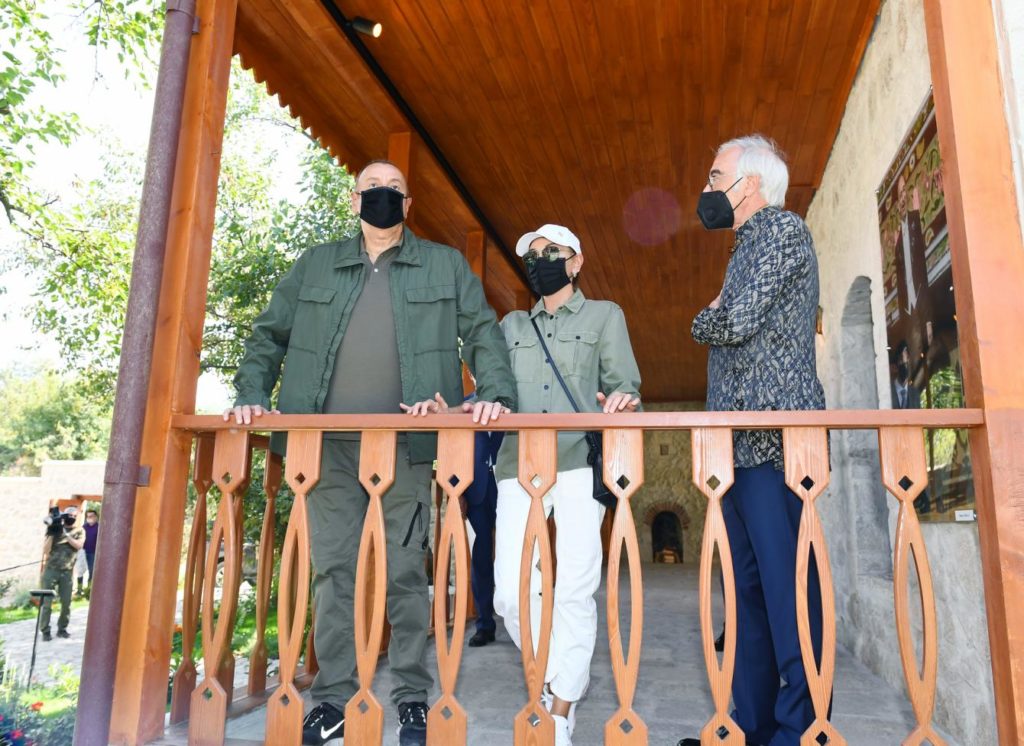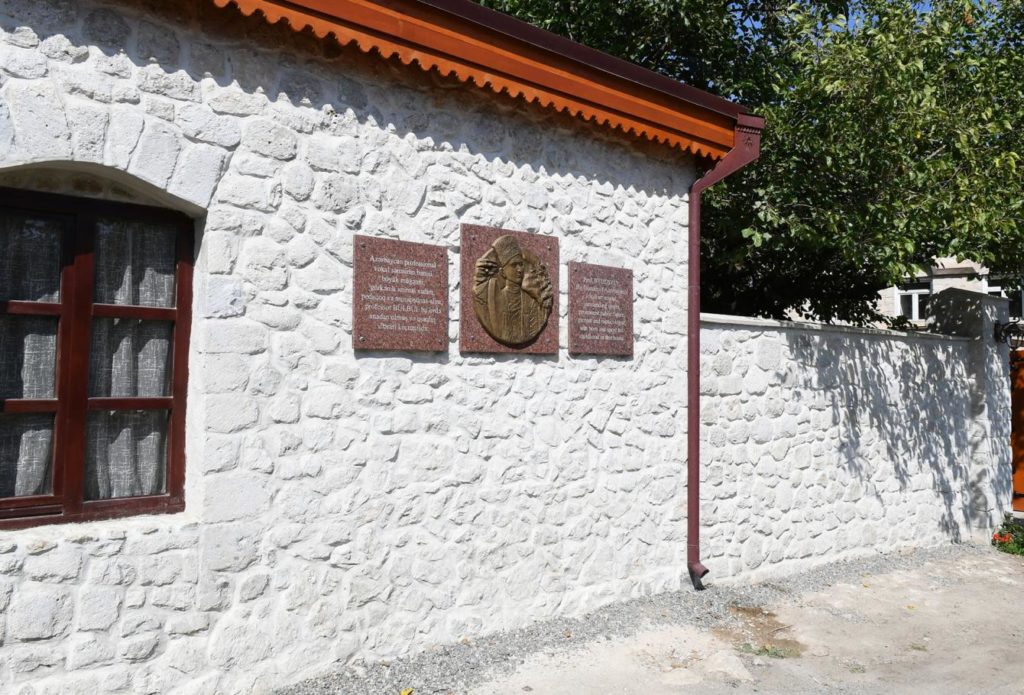July – December 2021
29
August
Inauguration of the House-Museum of Bulbul
Inauguration of the house-museum of People’s Artist Bulbul, who has provided great services to the development of Azerbaijan’s music culture and played a significant role in the formation and development of the professional vocal school, took place on August 19 in Shusha city after the restoration. President of the Republic of Azerbaijan Ilham Aliyev and First Lady Mehriban Aliyeva attended the inauguration ceremony.
The house where the eminent musician was born has been acting as a house-museum since 1982. Following the instruction of National Leader Heydar Aliyev, the Executive Committee of the Shusha City People’s Deputies decided on August 31, 1982, to turn the house where Bulbul was born and lived into a house-museum. The building was repaired during 1982-1983, a museum exposition was built there, and an administrative building was constructed in front of the museum. Photos related to Bulbul’s childhood years and some of his personal belongings, including his gaval, had been showcased in the museum. Over 9000 documents reflecting Bulbul’s creativity, research, and pedagogical and public activities were collected here. Materials proving Bulbul’s long-year efficient creative works associated with the creation of Azerbaijan’s new vocal school, as well as studying and promoting popular music were also demonstrated in the house-museum.
During the First Karabakh War, the house-museum was subjected to Armenian vandalism and stopped its activity in 1992. Repair and reconstruction works that were carried out on the museum following President of the Republic of Azerbaijan Ilham Aliyev’s instruction at the time of his visit to the house-museum during the trip to Shusha city on 14 January 2021 have been already completed. While carrying out restoration works, two scripts in Arabic and a picture describing the Sun’s symbol were discovered under the plastering. There was an ayah from Koran in one of the scripts, another showing the date of construction of the house. The newly discovered script on the wall shows that the building was constructed in 1788. By its typological origin, the building embodies features of historical residential buildings of Karabakh and Azerbaijan, with the rooms’ interior structure being characteristic of Azerbaijan’s traditional homes.
During the occupation of Shusha, the house was made useless, cracks were formed in load-bearing walls, and the walls sank. The foundations of all load-bearing walls were reinforced during the restoration works, and reconstruction works were carried out on the walls with cracks. Rotten wooden floors in the rooms were replaced with new ones. The roof, doors, and windows had rotten and become useless. Therefore, they were replaced with new ones, maintaining the building’s historical appearance. The yard related to Bulbul’s house-museum was renovated, keeping its primary shape. Bulbul’s museum exposition has been built in the building. Bulbul’s newly made bust was erected in the house-museum’s yard. Bulbul’s former bust, which had been subjected to Armenian vandalism during Shusha’s occupation, is also kept in the yard to demonstrate Armenian barbarism.


